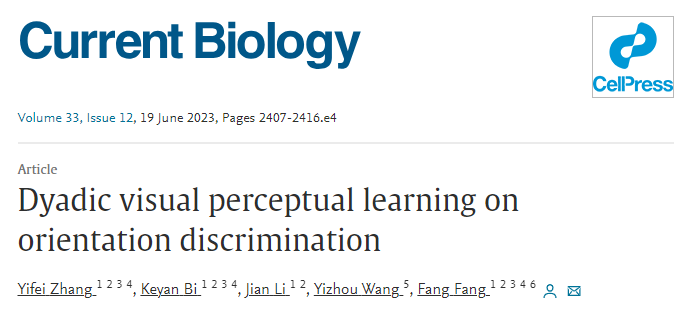Prof. Fang Fang: Dyadic visual perceptual learning on orientation discrimination

Summary
The belief that learning can be modulated by social context is mainly supported by high-level value-based learning studies. However, whether social context can even modulate low-level learning such as visual perceptual learning (VPL) is still unknown. Unlike traditional VPL studies in which participants were trained singly, here, we developed a novel dyadic VPL paradigm in which paired participants were trained with the same orientation discrimination task and could monitor each other’s performance. We found that the social context (i.e., dyadic training) led to a greater behavioral performance improvement and a faster learning rate compared with the single training. Interestingly, the facilitating effects could be modulated by the performance difference between paired participants. Functional magnetic resonance imaging (fMRI) results showed that, compared with the single training, social cognition areas including bilateral parietal cortex and dorsolateral prefrontal cortex displayed a different activity pattern and enhanced functional connectivities to early visual cortex (EVC) during the dyadic training. Furthermore, the dyadic training resulted in more refined orientation representation in primary visual cortex (V1), which was closely associated with the greater behavioral performance improvement. Taken together, we demonstrate that the social context, learning with a partner, can remarkably augment the plasticity of low-level visual information process by means of reshaping the neural activities in EVC and social cognition areas, as well as their functional interplays.
Original link: https://doi.org/10.1016/j.cub.2023.04.070